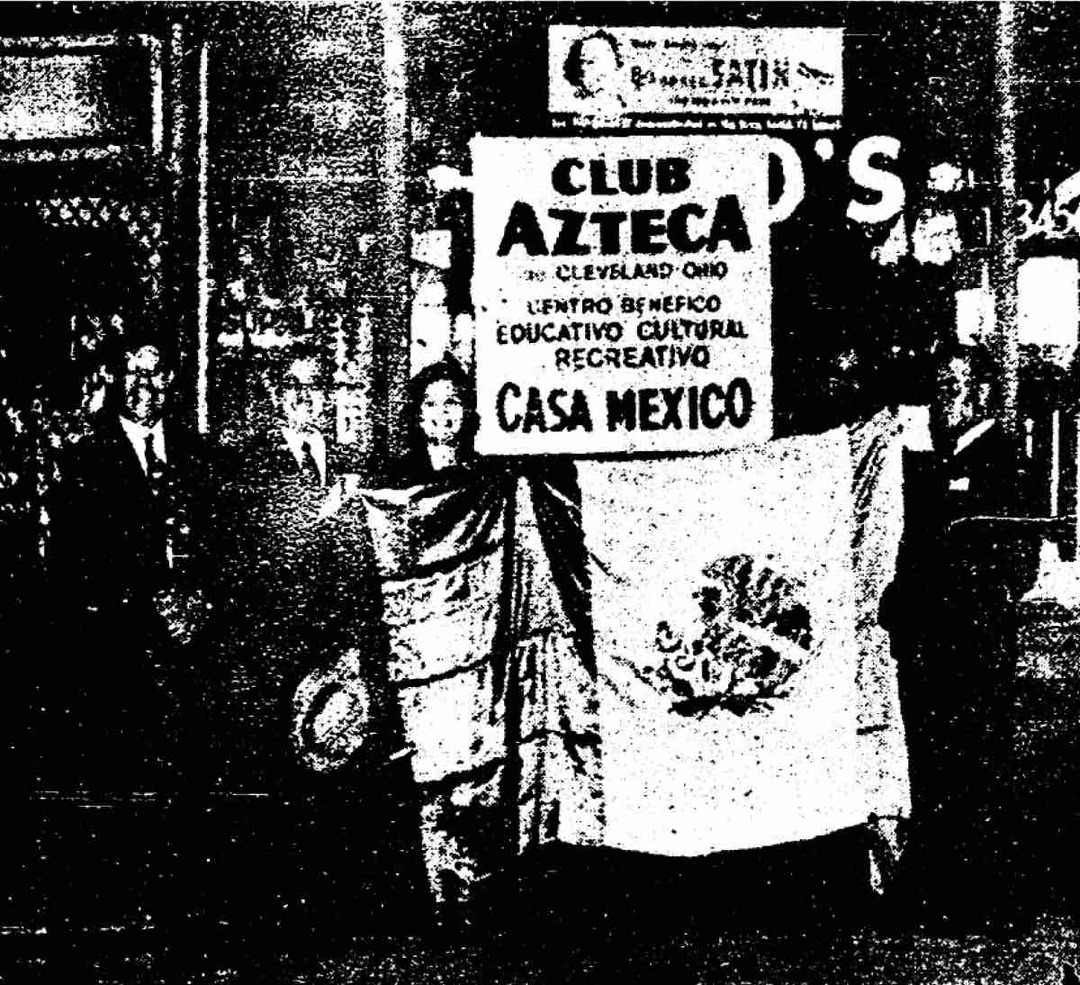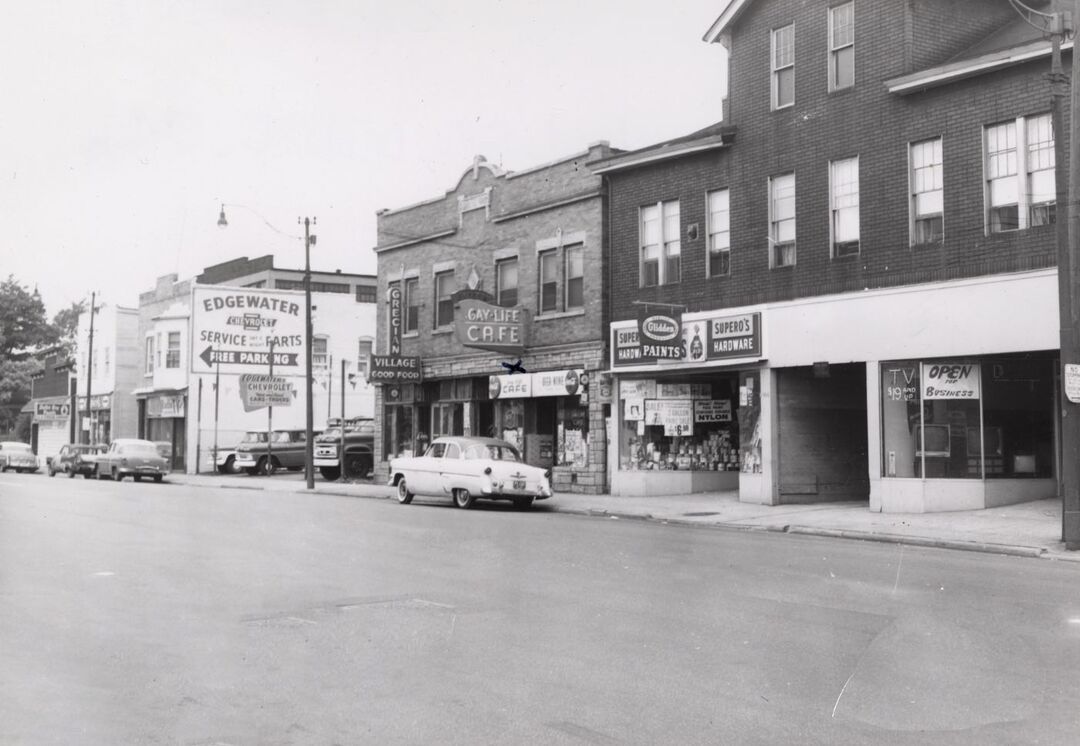
The autumn of 1951 was a momentous time for Cleveland's Mexican community. After years of raising funds through biannual fiestas and receiving gifts from Mexican organizations across the United States and even a contribution from the National Bank of Mexico, Club Azteca closed a deal to purchase a building for its first permanent home in the neighborhood that would later be known as Detroit Shoreway. The club served as a social and cultural center for Mexican Clevelanders for the next seven decades.
Club Azteca had its start in discussions among Mexican men who were taking English classes at the Hiram House settlement on Orange Avenue in the early part of the Great Depression. With the encouragement of a Hiram House language instructor, they decided in 1932 to establish Club Azteca as the first formal Mexican organization in Cleveland to provide a forum and safe haven for socializing, cultivating cultural traditions, and addressing common issues such as limited economic opportunity and discrimination that faced their community. The first Club Azteca president was Felix Delgado, who had left central Mexico to work as a Texas sharecropper before moving to Cleveland in 1923 to work on the Baltimore & Ohio Railroad.
Mexicans had been moving to Cleveland since the Mexican Revolution in 1910, and their numbers grew further during and after World War I. Like Delgado, many took jobs on the railroads, as well as in the steel mills, at a time when such jobs were being vacated by U.S. soldiers. Unlike some immigrant groups that concentrated in a single neighborhood, Mexicans had no single, well-defined center, and this remained true into the 1930s.
For its first twenty-five years, Club Azteca held biweekly or monthly meetings in the homes of members. The club also organized occasional larger events at venues such as Swiss Hall and St. Michael's Hall in Tremont, Ceska Sin Sokol Hall in Clark-Fulton, and Carpathia Hall in Detroit Shoreway. Such events included Club Azteca's commemorations of the anniversaries of Mexican Independence in 1820 and Mexico's defeat of the French army in the Battle of Puebla on May 5, 1862 (Cinco de Mayo). The event featured a historical pageant with members playing the part of Mexican military heroes.
When it incorporated in 1945, Club Azteca numbered more than 300 members. As the community and the club expanded after World War II, Club Azteca's leaders began to seek a permanent home closer to where many members now lived on the Near West Side. By 1951, the club had pooled enough resources to buy a former hardware store and apartment building at 5602 Detroit Avenue, which it fixed up over the next few years through "sweat equity." The new Club Azteca–Casa Mexico officially opened on June 15, 1957.
In addition to being a place to dance and socialize on weekend nights and to gather for potluck Sunday dinners, Casa Mexico provided important community services. It had a welcoming committee that delivered gift baskets to newcomers, and if a family arrived with nowhere to stay, the club found temporary quarters by tapping its members. The club also served as a clearinghouse for information that new migrants needed about where to buy food and how to do a myriad of daily activities in the city. For blue-collar workers who lived in roominghouses without kitchens, Club Azteca provided homemade meals.
Although Cleveland's Hispanic communities remained distinct, certain moments drew them together. In 1978, for example, the annual celebration of the feast day of Our Lady of Guadalupe (the patron saint of Mexico) at St. Michael's Hall encompassed not only Mexican but also Puerto Rican Clevelanders. The celebration included both Mexican and Puerto Rican music, and foods included the familiar enchiladas, burritos, and tacos alongside pastellas, a kind of Puerto Rican pastry. The festivities included a promenade by the queens and princesses of Club Azteca and its Puerto Rican counterpart, Club San Lorenzo, an organization founded in 1969 by natives of San Lorenzo, Puerto Rico. In 1990, a new event called Festival 90 drew together Club Azteca, Club San Lorenzo, and Club Alma Yaucana, another organization founded in 1961 to welcome newcomers from Yauco, Puerto Rico.
Although it was cooperating with other organizations, Club Azteca was beginning to suffer financial challenges in the 1980s, leading it to use its Detroit Avenue hall primarily as a nightclub to generate much-needed revenue. Club Azteca hosted "Puerto Rican Night" dances on Saturdays, an appeal to a community that was about five times larger than the city's Mexican-American community by 1990. By the end of the twentieth century, in spite of continuing to have many "social members" who enjoyed its nightclub, Club Azteca had dwindled to only 67 voting members, which led its officers to worry about the club's future.
Indeed, within a few more years Club Azteca's building fell into disuse. During this difficult time, Ruth Rubio-Pino, whose parents had managed the club from the mid-1950s until 2007, became president under a new Club Azteca administration in 2015. She tried to revive the struggling organization but found little support and the headquarters building now essentially beyond repair. After the building went into foreclosure in 2019, Club Azteca's small remaining membership was able to relieve its financial burden by transferring its building to the Cuyahoga Land Bank in 2020.
When a developer acquired the building as part of several parcels it was assembling to erect a large apartment building, it and Club Azteca agreed to develop a plan for incorporating the organization's heritage into the new building's design. Although Casa Mexico was demolished in 2021, exactly 70 years after its purchase, Club Azteca continues to explore possibilities for creating a space to honor its long legacy as a community anchor for Mexican culture and social action in Northeast Ohio.
Images






